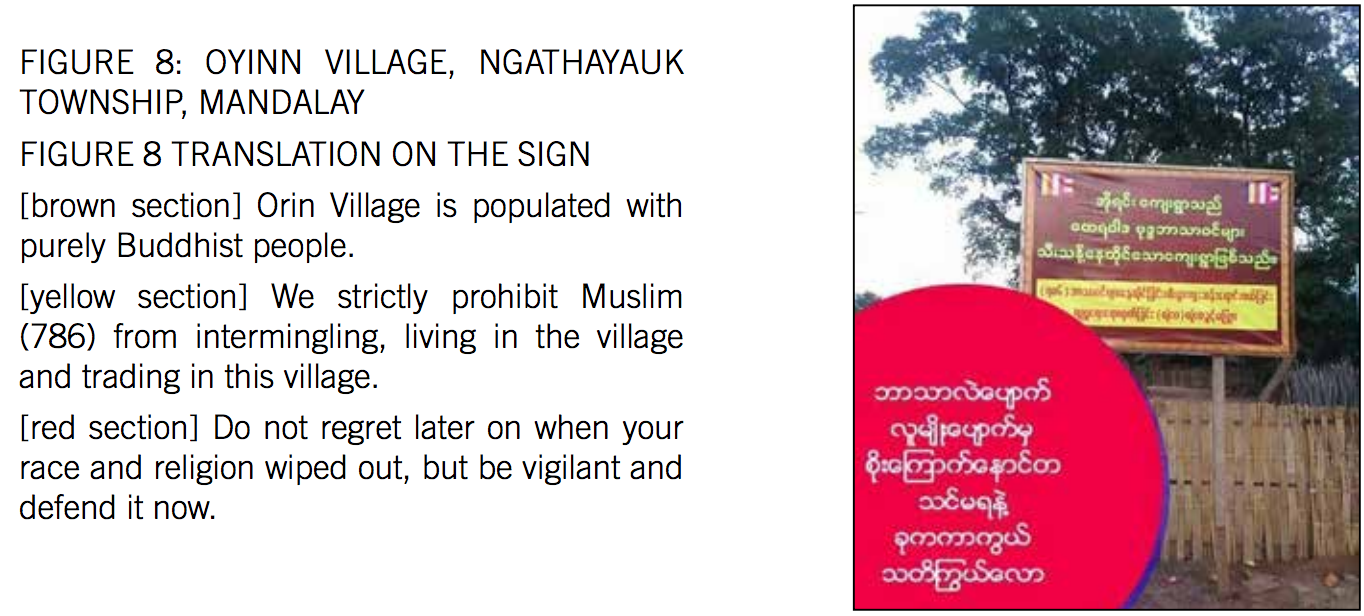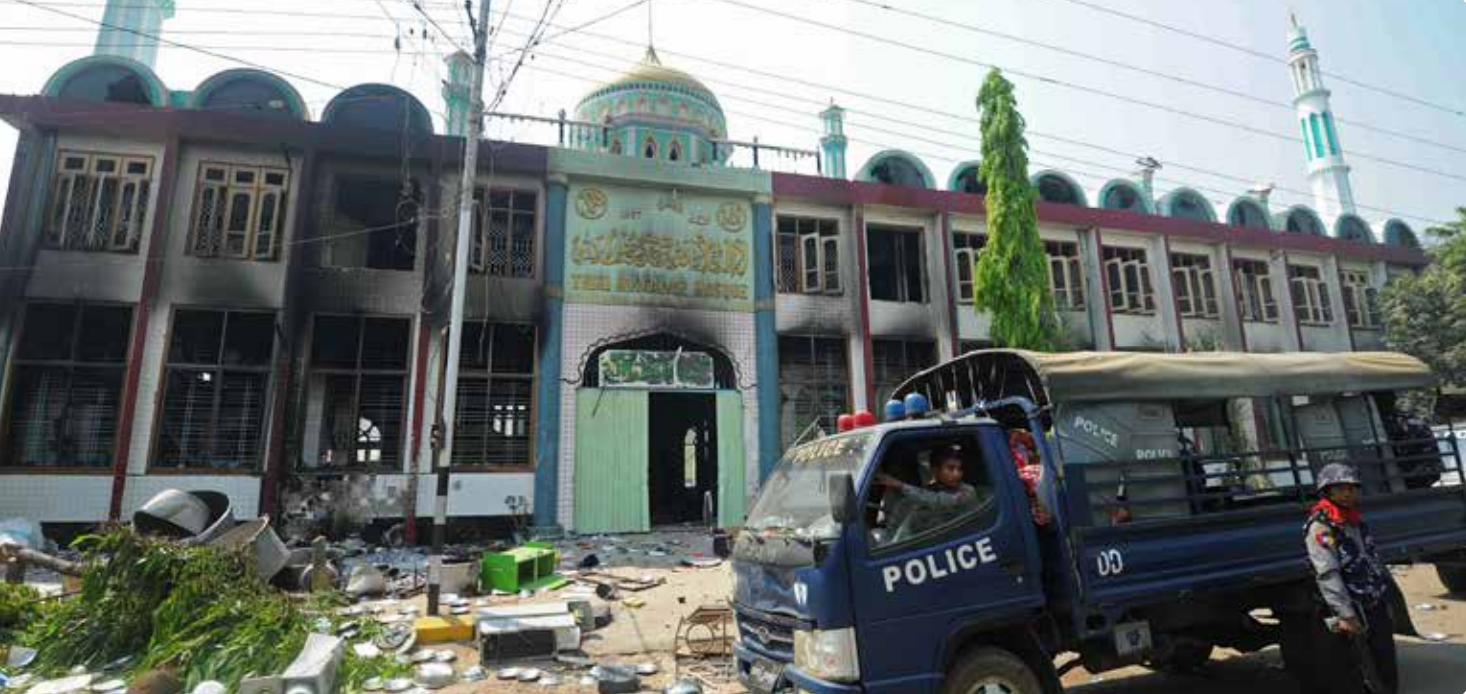In the years leading up to yesterday’s declaration by UN human rights chief Zeid Ra’ad Al Hussein that the Myanmar military’s actions in Rakhine State amount to “human cleansing” against Rohingya Muslims, Myanmar’s other Muslim communities have suffered a slower version of the same process.
A report published by the Burma Human Rights Network (BHRN) on September 5 claims that since the 2012 Rakhine State riots, in which communal violence between Muslims and Buddhists claimed the lives of more than 80 people and displaced more than 90,000, the number of self-declared “Muslim-free” villages in Myanmar has been on the rise.
“BHRN has documented the existence of at least 21 villages spread across the country where locals, with permission from the authorities, have erected signboards warning Muslims not to enter,” said BHRN founder and executive director Kyaw Win at a recent presentation of the report in Bangkok.
Before 2012, there were a number of towns in Myanmar with official restrictions on Muslims, namely in Rakhine State and Kayin State, but, according to NHRN’s analysis, the number has grown throughout the country in response to narratives that portray Muslims as a threat.
“The violence that began in 2012 triggered an intensified effort among Buddhist nationalists to determine who did and did not belong in Burma. While segregation measures were enacted in Rakhine State, with the government stressing that separation of the two communities was required for security reasons, elsewhere in the country, a grassroots campaign to keep Buddhist and Muslim communities apart grew in strength while the government failed to act,” says the report. “‘Muslim-free villages’ are perhaps the most explicit example of this.”
“The banishing of Muslims from Buddhist villages appears to be motivated by a perception that the presence of Muslims, both within the country as a whole and also in hyper-local settings, is diluting the strength of Buddhism and, therefore, is threatening. These villages have become symbolic bastions of Buddhist purity,” it concludes.
Along with its analysis, the report includes photos of dozens of signboards and documents declaring villages off-limits to Muslims. Several of the signboards present the following restrictions:

Other signboards, refer to Muslims as kalar – a controversial term used by some ultranationalists to imply that Muslims are foreign to Myanmar. Other signs ban all non-Buddhists. One particularly alarming sign reads:

Another reads:

According to BHRN, these “Muslim-free villages” are part of a wider trend of systemic persecution of Muslims in Myanmar that is not confined to Rakhine State and targets Rohingyas and non-Rohingyas alike.
The report documents cases in which damaged or destroyed mosques are prevented from being rebuilt, as well as attempts by crowds of Buddhists to intimidate Muslims at worship by accusing them of rape and murder.
While activities of vocal anti-Muslims groups like Ma Ba Tha have been less frequent since the National League for Democracy took over the government in 2015, the BHRN report argues that these subtler, institutional forms of repression against Myanmar’s Muslims have been allowed by authorities to take root.





Reader Interactions